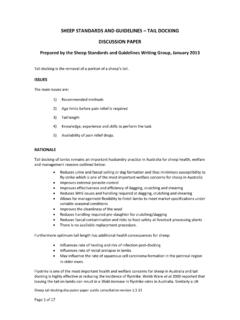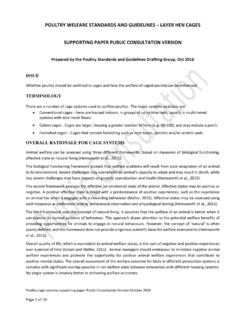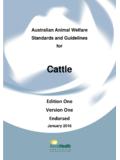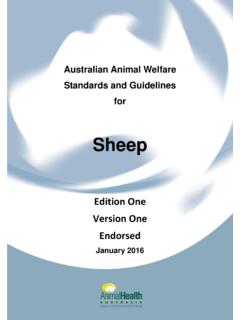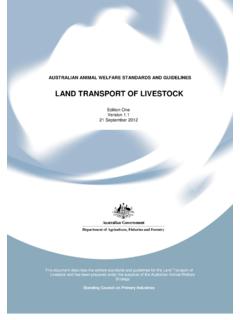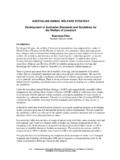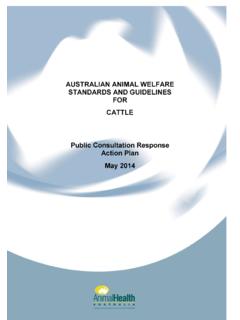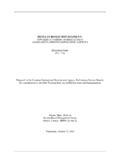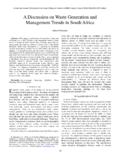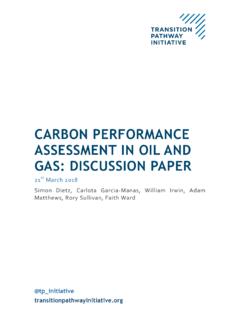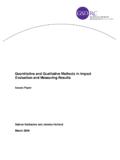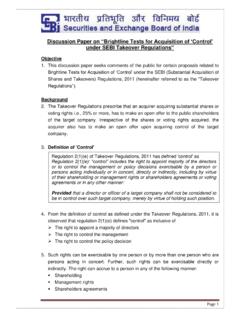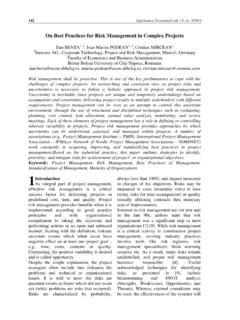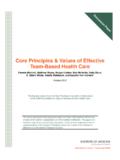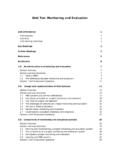Transcription of CATTLE STANDARDS AND GUIDELINES BEEF …
1 beef feedlots discussion paper public consultation version Page 1 of 20 CATTLE STANDARDS AND GUIDELINES beef feedlots discussion paper Prepared by the CATTLE STANDARDS and GUIDELINES Writing Group, February 2013 A beef CATTLE feedlot is a confined yard area with watering and feeding facilities where CATTLE are completely hand or mechanically fed for the purpose of beef production. Further details are contained in Appendix 1. ISSUES This paper reviews a number of specific welfare issues of beef feedlots . Confinement of CATTLE for show or breeding purposes is not covered in this paper .
2 The issues addressed by this paper in four sections are: 1) Stocking density 2) Feed and water provision 3) Excessive heat load management 4) Other proposed beef feedlot specific STANDARDS and GUIDELINES . The paper is divided into four sections on this basis. The overall objective is: CATTLE in feedlots are managed in a way that minimises the risk to CATTLE welfare . 1. STOCKING DENSITY RATIONALE The variable nature of the Australian climate means that the feeding of CATTLE for production is often required to meet market quality and supply requirements.
3 CATTLE on pasture may be supplementary fed; however in some circumstances it can be a more appropriate strategy to place CATTLE within a beef feedlot. Indoor feedlots are not part of the system in Australia. The confinement of CATTLE is fundamental for the operation of beef feedlots for the following reasons. beef feedlots discussion paper public consultation version Page 2 of 20 The confinement of animals within feeding pens improves control of the environmental impacts of CATTLE . feedlots are constructed to allow efficient collection of manure and effluent and provide protection to surrounding land, surface and ground water resources.
4 The confinement of CATTLE permits the close health inspection of animals on a regular basis, and the removal of ill or injured CATTLE for treatment. The confinement of CATTLE allows the efficient provision of feed and water. RECOMMENDATIONS The writing group considered current scientific knowledge and practice and agreed that a minimum stocking density of 9m2 per Standard CATTLE Unit (SCU) is an appropriate allowance. STANDARDS AND GUIDELINES PROPOSAL OBJECTIVE Confined CATTLE are provided sufficient space to satisfy their physiological and behavioural needs.
5 STANDARDS A person in charge must ensure a minimum area of 9m2 per Standard CATTLE Unit for CATTLE held in external pens. Note: Indoor feedlot systems are not used in Australia. GUIDELINES None at present ANIMAL HEALTH AND WELFARE CONSIDERATIONS Space Allowance MLA/ALFA commissioned an independent review (Ferguson, Colditz and Fisher 2008) of the science underpinning the current feedlot code and some of the sections of the review have been included in the following discussions on pen and trough space allowance.
6 It should be noted that most commercial feedlots in Australia are licensed to operate at space allowances between 12m2 and 20m2 per SCU (Reference Manual for the Establishment of beef CATTLE feedlots in Queensland 2000). Most research on CATTLE space allowance relates to indoor housing facilities. However, Fell and Wilson (1998) compared the behavioural and physiological responses in CATTLE on pasture and in a conventional feedlot beef feedlots discussion paper public consultation version Page 3 of 20 environment (external pens) at two different stocking densities; 12m2 (normal) and 6m2 (stressed).
7 In addition to a reduced space allowance, the stressed feedlot treatment also included a reduced feed bunk space allowance and the feedlot pad was continually kept wet. An experimental feedlot was used and the CATTLE were fed over a period of 42 days. The combination of these resource constraints in the stressed feedlot treatment would have been expected to elicit a significant difference. However, Fell and Wilson (1998) and Wilson et al (2002) found no differences in average daily gain, behaviour (lying time and social interactions) or any of the physiological measures between the two feedlot treatments.
8 The authors concluded that the CATTLE had successfully adapted to the feedlot environments, despite the resource constraints, but they also expressed some caution about extrapolating the results to an industry feedlot context. Indoor Housing Facilities It is believed that there are only two indoor housing facilities in Australia1 and they have been used only sporadically since their construction. It also is unlikely that any new feedlot indoor housing facilities will be constructed.
9 For these reasons it is proposed that references to construction and use of CATTLE indoor housing facilities be excluded from the new CATTLE STANDARDS and GUIDELINES . REVIEW OF NATIONAL POLICIES AND POSITIONS The current Australian Model Code of Practice for CATTLE 2nd edition (2004) states that: The stocking density of pens or yards must take into account age, size, behavioural needs, movement and feeding patterns of CATTLE . In any event, an absolute minimum space requirement of 9m2 must be provided.
10 The Australian Veterinary Association (AVA) beef and sheep feedlots policy states: beef CATTLE and sheep/lamb feedlots must be operated in compliance with the Primary Industries Standing Committee (PISC) Model Code of Practice for the Welfare of Animals: CATTLE , Second Edition, and the Model Code of Practice for the Welfare of Animals: The Sheep, Second Edition. The AVA also supports a guideline that says: For beef CATTLE feedlots , the STANDARDS set out in the National Feedlot Accreditation Scheme of the Australian Lot Feeders Association (ALFA) should be followed.
